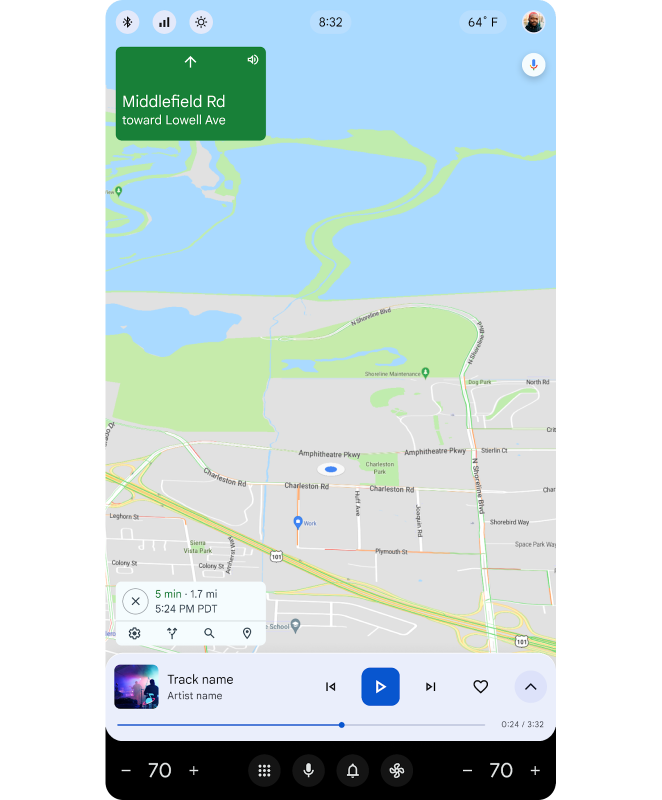原始设备制造商 (OEM) 可以自由自定义竖屏参考设计。他们应应用全局自定义设置,使设计与整个 IVI 系统保持一致,如全局样式和布局自定义中所述。
他们还可以自定义纵向参考设计的特定方面,并特别注意以下方面的指南:
全局样式和布局自定义
合作伙伴 OEM 必须自定义参考设计,以体现其品牌价值、针对其显示配置进行优化,并确保其 IVI 系统的一致性。
可全局自定义的方面包括:
样式
合作伙伴 OEM 必须自定义纵向参考设计的样式,以区分其品牌并与其他 IVI 系统部分保持样式一致性。
可自定义的样式包括图标样式、字体大小和粗细、颜色应用、高度和其他视觉效果。
布局
OEM 应仅在必要时自定义布局,例如,在需要调整界面以适应其硬件时。
竖屏参考设计布局的可自定义方面包括:
- 组件的位置,例如工具栏在应用布局中的放置位置
- 组件内元素的排列方式,例如工具栏内的操作
互动模式
原始设备制造商 (OEM) 应仅在必要时自定义互动模式。
竖屏参考设计中的互动模式包括为导航、搜索和浏览提供的互动模式。
可能需要自定义互动模式的情况包括:根据特定的硬件需求调整互动模式,例如不同的输入机制或需要运行全尺寸应用的较小屏幕。
基础图层自定义
OEM 可以选择可在基础层上运行的应用类型。例如,导航应用或停车应用。
Google Automotive 强烈建议在基础层运行导航应用,在顶层运行所有其他应用。


状态栏自定义
OEM 可以自定义状态栏的以下方面:
- 快捷控件的内容:下拉菜单中显示的设置
- 相对于应用的位置:应用是完全显示在状态栏下方,还是部分显示在状态栏后面
- 默认不透明度:状态栏是不透明还是透明
- 默认颜色(如果状态栏是不透明的)


应用开发者可以替换状态栏的以下方面:
- 不透明度(不透明或透明)
- 颜色(如果状态栏是不透明的,并且应用完全位于状态栏下方)
自定义系统导航栏
OEM 和用户可以自定义系统导航栏的某些方面,包括舒适度控制、通知、应用启动器和语音助理。


OEM 可以自定义:
- 数字助理:OEM 可以自定义要在汽车中使用的数字助理。例如,Google 助理。
用户可以自定义:
- 应用启动器:用户可以根据自己的喜好整理应用。
